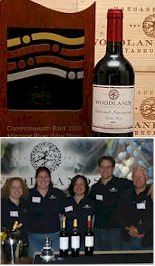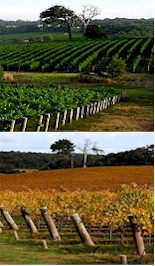


Woodlands vineyard was one of the first five vineyards to be planted in the Margaret River Wine Region. David and Heather aimed to create wines to emulate the great vineyards of Bordeaux, namely Cabernet Sauvignon and Cabernet based blends. Woodlands came to fame early on with the release of the 1981 Andrew Cabernet Sauvignon. This wine took out trophies for Best Red Wine at the Perth Wine Show, the Mt Barker Wine Show and the National Wine Show. This wine was the first from Margaret River to achieve a National Red Wine Trophy. Subsequent Cabernets made by David Watson won trophies and critical acclaim across the country.

In 1992 Woodlands production virtually ceased while David and Heather brought their children up in private schools in Perth, and fruit was sold to other high profile producers in the region. In 1999, with the children out of school, Woodlands began to produce wines again, making the most of its fully mature vines. Woodlands now has an annual production of 4000 cases, specializing in red wine. David’s son Stuart has been the winemaker at Woodlands since 2002.
In 2005 Woodlands won Trophies at the Margaret River Wine Show and the Winewise Small Vignerons Awards. Woodlands also won gold medals at the National Wine Show, the Margaret River Wine Show (2 golds), the Perth Royal Wine Show, the Rutherglen Wine Show (2 golds), the Winewise Small Vignerons Awards, and the Boutique Winemaker’s Awards.
Winemaking is minimalist at Woodlands, the emphasis being on small open ferments and excellent barrel selection. Woodlands still aims to emulate the great wines of Bordeaux, and today stands closer to its goal then ever before. The Wilyabrup sub-region is in the heart the Margaret River wine-growing region, and contains most of Margaret River’s oldest and most respected wineries.

In 1973 cuttings were taken from the Moss Wood vineyard located across the road, and an initial planting of eight acres was made in rows heading east-west along the contour of the property - 3 meters between rows and 1.75 meters between vines. The initial planting comprised 3 acres of Cabernet Sauvignon. A further 5 acres was planted between 1974 and 1976, comprising Cabernet Sauvignon, Malbec, Pinot Noir and Cabernet Franc. The old block was completed in 1985, with 4 acres of Chardonnay and Cabernet Sauvignon planted. Subsequent plantings now sees Woodlands with a total of twenty six acres (ten hectares) of vines.
The soil at Woodlands is composed of 30cm of top soil, a bed of 30 cm of gravel extending to 60 cm of gravel and then a bed of white clay, ensuring excellent sub soil drainage for root development. Woodlands is located within its own valley, with slopes rising in each direction and the Woodlands Brook running through the centre. Woodlands vineyard is dry grown and maintained by hand. Attention in the vineyard includes cane pruning, bunch thinning, hand plucking the leaves around the fruit zone, crop thinning and hand picking.
"The quality of the grapes, with a priceless core of 6.8 ha of 30+ year old cabernet sauvignon, more recently joined by merlot, malbec, cabernet franc, pinot noir and chardonnay, has never been in doubt. Whatever the shortcomings of the 1990s, these days Woodlands is producing some spectacular wines in small quantities. The larger volume Cabernet Sauvignon is also of very high quality. Some behind the scenes consultancy advice has played its part, and Woodlands is now a major player in the top echelon of Margaret River producers. " -James Halliday
